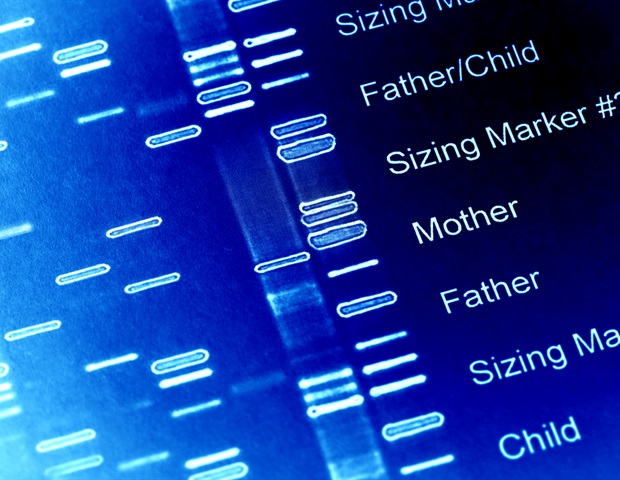Cancer researchers at the University of Chicago and the University of California, San Francisco (UCSF) have discovered that mutations in certain genes can lead to the accumulation of DNA errors, resulting in a specific type of genetic change known as large tandem duplications (TDs) that can arise from the collision of two critical cellular processes: transcription and DNA replication. Understanding the specific type of DNA damage that leads to TDs may open new avenues for developing treatments targeting cancers with these specific genetic alterations. The study findings were published in Nature Cancer in November 2024.
DNA acts as a master copy of genetic information and must therefore remain consistent and error-free as cells divide and multiply across generations. The reliability of the DNA replication process depends on genome stability, which is maintained by DNA repair mechanisms that correct any mistakes that occur during DNA replication. Failures in these repair systems can introduce mutations and, ultimately, create genomic instability, which is strongly linked to cancer development. However, the underlying causes of such failures are not yet fully understood.
DNA consists of two strands in a double-helix structure. Each strand serves two primary purposes: acting as a template during DNA replication and providing instructions for protein synthesis in a process called transcription. Replication and transcription machinery can operate simultaneously on the same DNA molecule but usually remain at a safe distance. Occasionally, however, these two processes collide, causing what is known as a transcription and replication collision (TRC), which disrupts both processes and creates cellular stress. The role of TRCs in generating genomic instability in human cancers remains largely unexplored.
Lixing Yang, PhD, Assistant Professor in the Ben May Department of Cancer Research at the University of Chicago, in collaboration with researchers at UCSF, sought to identify tumors with high levels of TRCs to explore treatment options targeting replication, transcription and DNA damage repair.
Through whole genome sequencing and analysis of thousands of tumor samples, the researchers detected multiple structural variations, including nucleotide deletions, duplications and translocations (where one part of the DNA is relocated to another).
Every tumor has a mix of structural variations, but the changes often occur in subsets, as there are many ways to produce these variations.”
Lixing Yang, PhD, Assistant Professor in the Ben May Department of Cancer Research, University of Chicago
For example, lung cancer is frequently driven by tobacco smoking, while melanoma is caused by UV exposure. The mutations resulting from tobacco carcinogens or UV light are distinct, as many different factors and cellular mechanisms contribute to mutation development.
“When thousands of mutations exist, identifying the specific signature representing an underlying mechanism or contributing factor for a particular subset of mutations is possible using mathematical decomposition, a math technique that breaks down complex genomic data into simple forms,” Yang said.
The researchers analyzed data from 6,193 whole-genome-sequenced tumors to study TRCs’ contributions to genomic instability. Structural variations in tumors resulting from collisions exhibit a unique signature, which can be detected through dosage imbalance -; a change in the number of copies at the DNA junctions, where strands of DNA join. This phenomenon occurs when extra copies of a DNA strand are mistakenly patched onto other DNA regions, causing structural variations. In some cases, this patching occurs near the original sequence, creating repetitive patterns known as tandem duplications (TDs).
The study found that large TDs are particularly prevalent in cancers of the upper gastrointestinal tract, prostate cancer, and female-related cancers like breast and ovarian cancer. These large TDs are associated with poor patient survival and are highly correlated with mutations in the genes TP53, CDK12 and SPOP.
“Although this correlation was known, no one had demonstrated that collisions are the underlying reason why CDK12 mutations lead to large tandem duplications,” Yang said.
One of the study’s most promising findings was that cancers with large TDs are more sensitive to specific drugs, such as WEE1, CHK1 and ATR inhibitors. These drugs offer a potential treatment pathway for cancers characterized by high levels of TDs.
This study highlights innovative strategies for targeting tumors with specific gene mutations, offering hope for improved outcomes for patients with aggressive, hard-to-treat cancers.
The study, “Transcription and DNA replication collisions lead to large tandem duplications and expose targetable therapeutic vulnerabilities in cancer,” was supported by the National Institutes of Health, University of Chicago, University of Chicago Medicine Comprehensive Cancer Center, Prostate Cancer Foundation, Department of Defense, Benioff Initiative for Prostate Cancer Research at UCSF and the Martha and Bruce Atwater Breast Cancer Research Program at UCSF.
Additional authors include Yang Yang, Xiaoming Zhong from the University of Chicago, Jonathan Chou, Michelle Badura, Patrick O’Leary, Henry Delavan, Troy Robinson, Emily Egusa, Jason Swinderman, Haolong Li, Meng Zhang, Minkyu Kim, Alan Ashworth and Felix Feng from University of California, San Francisco.
Yang, Y., et al. (2024). Transcription and DNA replication collisions lead to large tandem duplications and expose targetable therapeutic vulnerabilities in cancer. Nature Cancer. doi.org/10.1038/s43018-024-00848-4.
Source link : News-Medica

